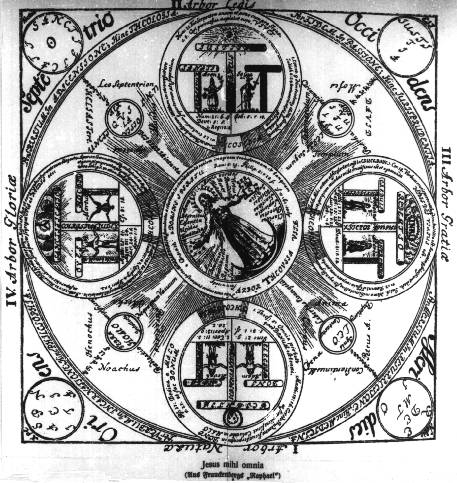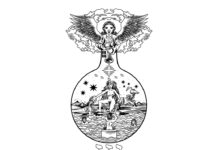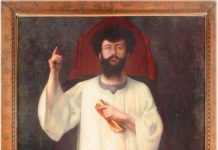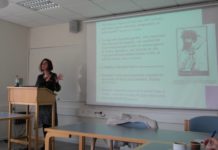Several readers have heard me mention the word ‘Pansophy’ in connection with the Rosicrucian Order teachings derived from Germany. In response to request for more information here is a brief overview of Pansophy and its history, which is quite riveting considering the vast influence it has had despite so few people knowing anything about it. It has had influence on Sophia-Theosophers, the Rosicrucian tradition and remains a hidden backbone to several popular initiatory bodies today.
Yet ask anyone connected to the Rosicrucian path about it and you’ll mostly get blank stares (yes that includes self-professed gurus.) A once widespread word used in Germany, the words ‘Rosicrucian and Pansophy’ were once synonymous. This is probably the first time anyone has spoken about it openly online, and it has survived, little seen, little understood, yet a vital thread continues in Germany.
A quick look at Pansophy on Wikipedia claims that the term was coined by John Asmos Comenius in the 1600’s and it should be noted he was greatly influenced by Jacob Boehme who is at the heart of this story. The Rosicrucian connection however was that the term itself was coined in communications between Comenius and Johan Valentine Andrea, who as we know today authored the Rosicrucian manifestos; the Fama and the Chemical Wedding of Christian Rosenkreuz. This can be seen in their letters which took place over several years; Boehme is securely mentioned in relation to the R.C.
Abraham Von Frankenburg is important here because not only is he the publisher of the works of Jacob Boehme and personal friend and student, but he founded a Rosicrucian brotherhood called the Circle of Pansophist. Their symbol was the rose cross and they were situated in Silesia, which is a highly significant location in relation to the later development of the German masonic Rosicrucians. The Boehme-R.C connection went so far that Boehme’s own protégé followed the same pilgrimage as described in the Fama, visiting place by place the same locations the figure of CRC traversed in the story to find wisdom.
The network between this Circle of Pansophist, Jacob Boehme and the R.C is sealed where we find that not only did Von Frankenburg publish the Christian mysticism of Boehme but he also worked upon visual expansions of the Rosicrucian manifestos. This can be seen for example in his designs of the Tomb of Christian Rosenkreuz. In his book titled Raphael he outright published an image of the altar stated to rest upon the incorruptible body of C.R.C, as clearly described in the Fama. See Adam McLean’s website here to get the full details. This is but one of many such Rosicrucian diagrams done by the Pansophists.

Why was the student/publisher of Jacob Boehme drawing depictions of the Rosicrucian tomb described in the Fama? Why did he call his brotherhood the Circle of Pansophist and how did he learn of that term, if not directly from the lips of Johan Valentine Andrea himself? What was moving at the time?
Many scholars claim an actual Rosicrucian society never existed, remaining only in the imagination of Valentine Andrea, yet here we have a Circle of Pansophist.
But it’s not Rosicrucian you say? ‘It’s just a bunch of dudes wearing funny hats.’ Right.
Fortunately there is in fact a forth manifesto titled the ‘Speculum Sophicum Rhodostauroticum’ meaning the Mirror of Wisdom of the Rosy Cross. Yes that’s right, there are not three R.C manifestos, BUT four in total, and this one was published in 1618; well within the period of the first R.C activities. Why is the fourth manifesto so important? It’s because it refers to the word ‘Pansophy’ directly, saying we are “revealing the much desired Collegium, Lodge, or Dwelling of the highly praised Rosicrucian brotherhood and their true philosophy; the fidelibus, pansophiae, studiosis.”
This concludes my first introduction to Pansophy. In following post I shall reveal its continuation, through the circles of Pansophy who joined with Gustav Meyrink in the late 1800’s, the use of the term Pansophy by his mentor Prestel, the alchemist who successfully transmuted base metals into gold, and how this system survived World War II in Germany, as taught by the last living Pansophist of Deutchland. Their story shall be told, with lots of interesting twists of fate, seemingly guided by Sophia herself.
Thank you for reading, and if you take anything away from this it should be that;
“Rosicrucian is synonymous with Pansophy.”
Your friend on the path, Samuel Robinson











It’s seems the Pansophers are the cohesive Order some are looking for.